- Similar to the lymphatic system, the glymphatic system acts as a glial-dependent waste clearance pathway in the brain to drain away soluble waste proteins and metabolic products.
- The mechanism for waste clearance occurs primarily during slow wave sleep.
- Increases in amyloid beta and tangles, which is associated with Alzheimer’s disease, may result from increased production of waste products or a reduction in removal.
- Describe the glymphatic system functions.
- Explain sleep basics and sleep studies.
- Describe sleep concerns and nursing implications.
Robyn Woidktke, the author, is a consultant for Panthera Dental (Sleep) and an advisor for Somnea. Relevant financial relationships have been mitigated.
Expiration: 3/1/27
Dr. Rafael Pelayo, a sleep physician from Stanford University, shared this insight into how he explains the sleeping brain: “My mother worked in a factory sewing clothes and would then also work some nights cleaning at a community college. I sometimes went with her, and that was my first experience with higher education. Because of that experience, I explain sleep as follows: When you leave your office or classroom, there is usually some garbage left behind, and things may be out of place. But the next day, when you return, the space has been cleaned up. How did that happen? Obviously, a custodial staff came in after the usual work hours to do this work. Among sleep functions is the custodial work of getting our brains ready for the new day.”
Improving sleep in patients with heart failure
Obstructive sleep apnea in adults
The glymphatic system, a glial-dependent waste clearance pathway in the brain, works to drain away soluble waste proteins and metabolic products, much like the lymphatic system in the rest of the body. The recent discovery of the glymphatic system generated much excitement and has led scientists to look at the link between neurodegenerative disease and the ability of the glymphatic system to eliminate brain waste, such as amyloid beta and tau. Those working in sleep medicine found this even more significant, as the mechanism for waste clearance occurs primarily during slow wave sleep. This link between the glymphatic system and sleep appears quite complex and fascinating.
Understanding how the glymphatic system works can help nurses perform patient assessments that take into account sleep quantity and quality, which can have an impact on overall health.
Sleep basics
The two-process model of sleep regulates sleep homeostasis. The circadian alerting system (Process C) keeps us alert during the day, and the homeostatic sleep drive (Process S) involves the production of sleep-inducing substances. (See Sleep processes.)
Sleep processes
The two-process sleep model includes the circadian alerting system (Process C) and the homeostatic sleep drive (Process S). Process C is strengthened by light exposure to keep us alert during the day; it reduces at night to maintain sleep. Process S, which involves an increase in sleep-inducing substances such as adenosine throughout the day, directly correlates to our level of wakefulness—the longer we’re awake, the more pressure we experience to sleep.
Sleep has two distinct states: nonrapid eye movement (NREM) and rapid eye movement (REM). NREM and REM cycle throughout the night, approximately every 90 to 120 minutes. NREM has three stages—N1, N2, and N3 (N3 also is called slow wave sleep). In normal adult sleep, individuals enter sleep through N1, which comprises about 5% of total sleep time (TST); N2 is approximately 50% of TST; N3 about 20%; and REM 25%. These percentages reflect the TST across the night. More slow wave sleep typically occurs in the first one-third of the night compared to REM (or dream sleep), which generally occurs most during the last one-third of the night.
Researchers continue to make new discoveries about the many functions of sleep. In addition to waste clearance, sleep functions include immune system regulation, memory consolidation, emotional processing, and cognitive performance.
Different physiologic phenomena happen in various stages of sleep. For example, in N2, the brain generates sleep spindles, which can be visualized on an electroencephalograph (EEG). These spindles are associated with memory creation, cortical development, and regulation of arousal. During REM, brainwave activity typically increases, dreams occur with bursts of eye movement, and muscles become atonic. In N3, declarative memory consolidation also is thought to occur. In slow wave sleep, growth hormone (necessary for metabolism, healing, and maintaining normal body structure) is secreted and the glymphatic system kicks into gear. (See What is a sleep study?)
What is a sleep study?
Sleep data and other physiologic parameters are recorded during a polysomnogram (PSG), or sleep study, conducted in a monitored laboratory setting. The PSG captures electroencephalogram readings, eye movement, muscle tone, heart rate, and respiration (including oxygen status). Every 30 seconds of data are scored, which provides insight into the sleeping person. A qualified sleep technologist monitors the PSG and provides additional understanding into sleep behaviors and collected data.
PSG data can be plotted graphically (sleep hypnogram or architecture) across the night. The hypnogram shows sleep quality and quantity, disruptions, and distribution of sleep stages. In parallel with the sleep evaluation, the PSG recordings provide a visual display of apnea, hypopnea, oxygen status, and limited ECG data. Although PSGs are time-consuming and expensive, the amount of data captured can prove invaluable in diagnosing sleep disorders.
The following figure compares the various waveforms as a reflection of electrical brain activity. It also shows the high amplitude, slow waves of stage N3 sleep compared to the faster, more active waves of the other stages.
Overview of the glymphatic system
The glymphatic system functions similarly to the lymphatic system. As summarized by Null and colleagues, the lymphatic system transports fluid throughout the body, clears waste products, and protects against infection. It consists of vessels with one-way valves, lymph nodes, and lymphoid organs such as the spleen, thymus, tonsils, and bone marrow. In general, the lymphatic system parallels the venous system. At the capillary level, interstitial fluid (ISF) enters the lymph vessels, becomes lymph, and is “cleaned” of waste; the remaining fluid returns to circulation.
The brain doesn’t exhibit the same type of lymphatic system, but researchers have identified lymph-type vessels in the meninges, dura lining, and inter-arachnoid space. A system of tunnels created by the astroglia cells form the glymphatic system. Aalling and colleagues described it as a “macroscopic waste clearance network in the brain.” Other proposed functions of the glymphatic system include providing the network to deliver non-waste substances such as glucose and neurotransmitters. The glymphatic system has an efflux of ISF and an influx of cerebral spinal fluid (CSF), which occurs at the level of the perivascular space and the astrocytic end-feet. The water channel aquaporin-4, located at the end-feet, supports fluid transport. The fluid then exits the brain and enters the peripheral lymphatic system. Slow wave sleep, intracranial pressure, respirations, and the pulsatile function of the arteries also aid fluid transportation.
Sleep and the glymphatic system
Research indicates that sleep augments glymphatic system function, which essentially shuts down during wake periods. In addition, slow wave sleep plays a greater role in moving waste products out of the brain than other sleep stages do. The high rhythmic, pulsing waveforms of slow wave sleep help to drive CSF fluid into the interstitial spaces, which aids waste elimination.
In mice studies, Xie and colleagues reported that the interstitial space volume increased by 60% during sleep, which enhances the exchange rate of CSF with ISF and escalates the waste removal rate. In addition, norepinephrine production usually declines during sleep, which also aids in relaxing the glymphatic vessels, reducing resistance, and enhancing fluid exchange.
Waste products attributed to cognitive decline
Using positron emission tomography, Shokri-Kojori’s team demonstrated that even one night of sleep deprivation in young people increased the amyloid beta burden. Kaur and colleagues described the two most concerning neuro waste products: amyloid beta peptides, which create plaques, and tau peptides, which result in neurofibrillary tangles. Both build up in the brain and can lead to Alzheimer’s disease (AD). In addition, α-synuclein, associated with Parkinson’s disease, also accumulates.
An increase in amyloid beta and tangles, which is associated with AD, may result from either an increase in production or a reduction in removing these waste products. Many individuals with AD also exhibit circadian rhythm disorder, which can impact slow wave sleep generation. In mice, the glymphatic system has an endogenous circadian rhythm in which CSF outflow is higher during wake and glymphatic function is higher at night. Because sleep aids glymphatic system function, improving a patient’s circadian rhythm and, therefore, sleep may prove advantageous. Bah and colleagues posit that improving sleep (a modifiable risk factor) may serve as a therapeutic target for patients with AD. However, the risk factors for AD are multifactorial (including genetic predisposition, cardiovascular disease, and diabetes) and the result of more than just a lack of good sleep quality and quantity.
Sleep and the aging population
As the aging population grows, more people may experience neurocognitive deficits. Normal aging results in more fragmented sleep, a decline in spindle activity, and a decrease in slow wave sleep quantity and quality. Wunderlin and colleagues explored the use of closed loop acoustical stimulation to enhance slow wave sleep. However, mixed results regarding improvement speak to the need for more research.
Aging also results in an increase in chronic conditions. A known bi-directional component exists between sleep and co-morbidity. In addition, patients with multiple sleep disorders, including obstructive sleep apnea (OSA), insomnia, and circadian rhythm disorders, also may face increased risk for compromised sleep. Early recognition and treatment of sleep disorders may improve health outcomes. In addition, education and promotion of healthy sleep in the elderly may help delay neurodegenerative disease.
Nursing implications
To address sleep dysfunction, nurses must perform sleep health assessments. Start with simple questions about sleep duration and disruption. Sleep diaries can help uncover insomnia and circadian rhythm disorders. In addition, several sleep questionnaires exist to aid assessments. For instance, the STOP-Bang questionnaire screens for OSA and the PROMIS sleep questionnaires support evaluation for sleep-related impairment and disturbance (www.healthmeasures.net).
Lifestyle modifications that can help improve sleep quality and quantity include good sleep habits (for example, keeping the sleep room cool and reducing the use of electronics an hour or two before bedtime), caffeine and alcohol reduction, and exposure to early morning sunlight. Reducing naps during the day, maintaining a consistent wake-up time, remaining active, and engaging in social activities also can help patients establish a good sleep routine.
Ask patients about co-morbidities, such as cardiovascular disease, diabetes, and pain, which may serve as a clue to sleep problems. If the patient has been diagnosed with OSA, which can contribute to cardiovascular and endocrine dysfunction and other neurocognitive deficits, provide education about positive airway pressure (PAP) and oral appliance therapy/mandibular advancement. Many patients don’t adhere to PAP therapy, so provide ongoing support and encouragement.
An always event
The discovery of the glymphatic system has led to a better understanding of the link between good sleep and the buildup of waste products in the brain, particularly during slow wave sleep. As more research emerges regarding the glymphatic system and neurocognitive decline, nurses must include sleep assessment and education at each patient encounter.
When nurses provide patients with simple instructions regarding sleep habits and emphasize the link between good sleep and the elimination of waste material, they can guide patients to better overall sleep, and if indicated, refer them for diagnosis and treatment of sleep disorders. Make sleep inquiry an always event.
Robyn Woidtke is the principal at RVW Clinical Consulting in Castro Valley, California.
American Nurse Journal. 2024; 19(3). Doi: 10.51256/ANJ032406
References
Aalling N, Munk ASF, Lundgaard I, Nedergaard M. The glymphatic system. 2017. Society for Neuroscience. neuronline.sfn.org/-/media/Project/Neuronline/PDFs/2018/The-Glymphatic-System.pdf
Ahmad F, Sachdeva P, Sarkar J, Izhaar R. Circadian dysfunction and Alzheimer’s disease—An updated review. Aging Med. 2023;6(1):71-81. doi:10.1002/agm2.12221
Bah TM, Goodman J, Iliff JJ. Sleep as a therapeutic target in the aging brain. Neurotherapeutics. 2019;16(3):554-68. doi:10.1007/s13311-019-00769-6
Benveniste H, Liu X, Koundal S, Sanggaard S, Lee H, Wardlaw J. The glymphatic system and waste clearance with brain aging: A review. Gerontology. 2019;65(2):106-19. doi:10.1159/000490349
Gellerstedt L, Medin J, Kumlin M, Rydell Karlsson MR. Sleep as a topic in nursing education programs? A mixed method study of syllabuses and nursing students’ perceptions. Nurse Educ Today. 2019;79:168-74. doi:10.1016/j.nedt.2019.05.030
Iliff JJ, Wang M, Liao Y, et al. A paravascular pathway facilitates CSF flow through the brain parenchyma and the clearance of interstitial solutes, including amyloid β.
Sci Transl Med. 2012;4(147):147ra111. doi:10.1126/scitranslmed.3003748
Jessen NA, Munk ASF, Lundgaard I, Nedergaard M. The glymphatic system: A beginner’s guide. Neurochem Res. 2015;40(12):2583-99. doi:10.1007/s11064-015-1581-6
Kaur J, Fahmy LM, Davoodi-Bojd E, et al. Waste clearance in the brain. Front Neuroanat. 2021;15:665803. doi:10.3389/fnana.2021.665803
Kylkilahti TM, Berends E, Ramos M, et al. Achieving brain clearance and preventing neurodegenerative diseases—A glymphatic perspective. J Cereb Blood Flow Metab. 2021;41(9):2137-49. doi:10.1177/0271678X20982388
Levendowski DJ, Gamaldo C, St Louis EK, et al. Head position during sleep: Potential implications for patients with neurodegenerative disease. J Alzheimers Dis. 2019;67(2):631-8. doi:10.3233/JAD-180697
Li J, Vitiello MV, Gooneratne NS. Sleep in normal aging. Sleep Med Clin. 2018;13(1):1-11. doi:10.1016/j.jsmc.2017.09.001
Louveau A, Plog BA, Antila S, Alitalo K, Nedergaard M, Kipnis J. Understanding the functions and relationships of the glymphatic system and meningeal lymphatics. J Clin Invest. 2017;127(9):3210-9. doi:10.1172/JCI90603
Mestre H, Mori Y, Nedergaard M. The brain’s glymphatic system: Current controversies. Trends Neurosci. 2020;43(7):458-66. doi:10.1016/j.tins.2020.04.003
Moore JE Jr, Bertram CD. Lymphatic system flows. Annu Rev Fluid Mech. 2018;50:459-82. doi:10.1146/annurev-fluid-122316-045259
Muccio M, Chu D, Minkoff L, et al. Upright versus supine MRI: Effects of body position on craniocervical CSF flow. Fluids Barriers CNS. 2021;18(1):61. doi:10.1186/s12987-021-00296-
Nedergaard M, Goldman SA. Glymphatic failure as a final common pathway to dementia. Science. 2020;370(6512):50-6. doi:10.1126/science.abb8739
Null M, Arbor TC, Agarwal M. Anatomy, lymphatic system. StatPearls. March 6, 2023. ncbi.nlm.nih.gov/books/NBK513247/
Reddy OC, van der Werf YD. The sleeping brain: Harnessing the power of the glymphatic system through lifestyle choices. Brain Sci. 2020;10(11):868. doi:10.3390/brainsci10110868
Roy B, Nunez A, Aysola RS, Kang DW, Vacas S, Kumar R. Impaired glymphatic system actions in obstructive sleep apnea adults. Front Neurosci. 2022;16:884234. doi:10.3389/fnins.2022.884234
Shokri-Kojori E, Wang G-J, Wiers CE, et al. β-Amyloid accumulation in the human brain after one night of sleep deprivation. Proc Natl Acad Sci. 2018;115(17):4483-8. doi:10.1073/pnas.1721694115
Shrivastava D, Jung S, Saadat M, Sirohi R, Crewson K. How to interpret the results of a sleep study. J Community Hosp Intern Med Perspect. 2014;4(5):24983. doi:10.3402/jchimp.v4.24983
Silva I, Silva J, Ferreira R, Trigo D. Glymphatic system, AQP4, and their implications in Alzheimer’s disease. Neurol Res Pract. 2021;3(1):5. doi:10.1186/s42466-021-00102-7
Wunderlin M, Züst MA, Fehér KD, Klöppel S, Nissen C. The role of slow wave sleep in the development of dementia and its potential for preventative interventions. Psychiatry Res Neuroimaging. 2020;306:111178. doi:10.1016/j.pscychresns.2020.111178
Xie L, Kang H, Xu Q, et al. Sleep drives metabolite clearance from the adult brain. Science. 2013;342(6156):373-7. doi:10.1126/science.1241224
Yankova G, Bogomyakova O, Tulupov A. The glymphatic system and meningeal lymphatics of the brain: New understanding of brain clearance. Rev Neurosci. 2021;32(7):693-705. doi:10.1515/revneuro-2020-0106
Zielinski MR, McKenna JT, McCarley RW. Functions and mechanisms of sleep. AIMS Neurosci. 2016;3(1):67-104. doi:10.3934/Neuroscience.2016.1.67
Key words: glymphatic system, sleep, cognitive decline


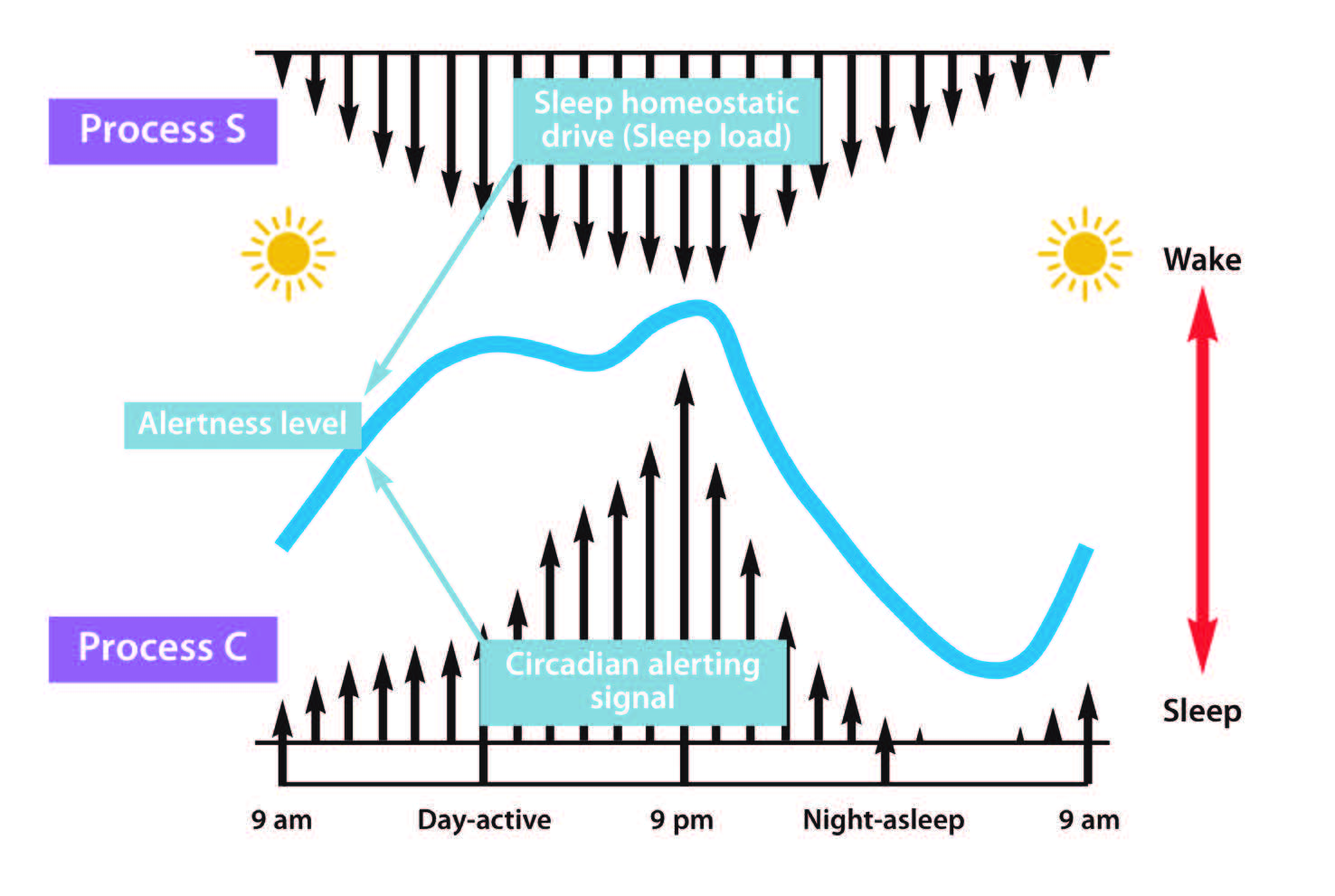








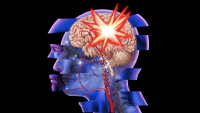



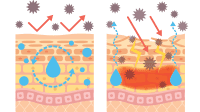

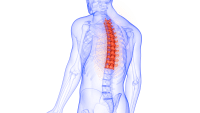
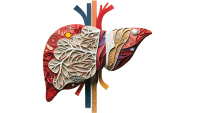


2 Comments. Leave new
Excellent article, it is an important topic that was explained clearly with suggestions on how to implement it into the care of our patients. This show yet again how important good quality sleep is.
Very important topic.